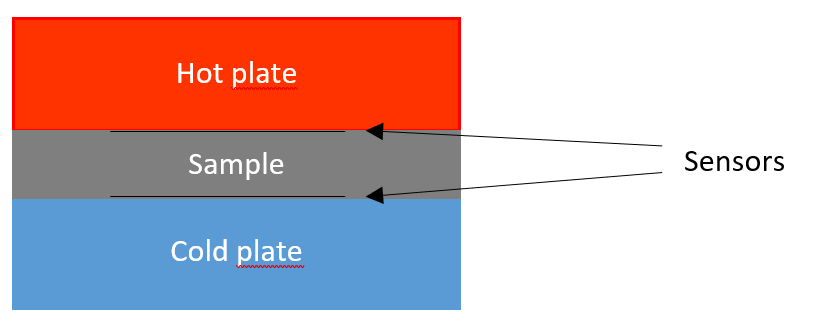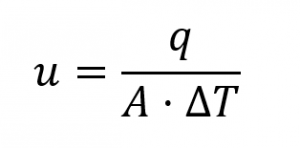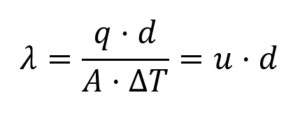Method of the HFM
What is the method of the HFM?
The heat flow meter determines the thermal conductivity and the thermal transmittance, which is also known as U-value, of materials with a low thermal conductivity like insulating materials.
For that, the sample is put between a heated and cooled plate, so the setup resembles the single-specimen guarded hot plate system Then, a temperature gradient is applied to the sample and the heat flow through the sample is measured. The heat flow is determined by two sensors between the sample and each plate.
The following figure shows the schematic measurement setup:

From the measured heat flow q the thermal transmittance u (U-value) can be calculated by

Where A denotes the area of the sample and ΔT the applied temperature gradient.
With the U-value and the thickness d of the sample, the thermal conductivity λ can be determined

Since it is necessary to calibrate the heat flow sensors with a material of known thermal conductivity, the HFM measurement is comparative and thus, the heat flow meter counts to the relative measurement methods.
Which properties are determined?
The Heat Flow Meter determines the thermal transmittance (U-value) and the thermal conductivity. In contrast to the GHP, the HFM measurements delivers accurate values for the thermal conductivity much faster.
However, GHP measurements have a higher accuracy since the HFM measurement is a comparative method and thus has some uncertainties.
Which norms count for the heat flow method?
- ASTM C518 – Standard Test Method for Steady-State Thermal Transmission Properties by Means of the Heat Flow Meter Apparatus
- ISO 8301 – Thermal insulation; determination of steady-state thermal resistance and related properties; heat flow meter apparatus
- DIN EN 12667 EN 12 – Thermal performance of building materials and products – Determination of thermal resistance by means of guarded hot plate and heat flow meter methods – Products of high and medium thermal resistance; German version EN 12667:2001
